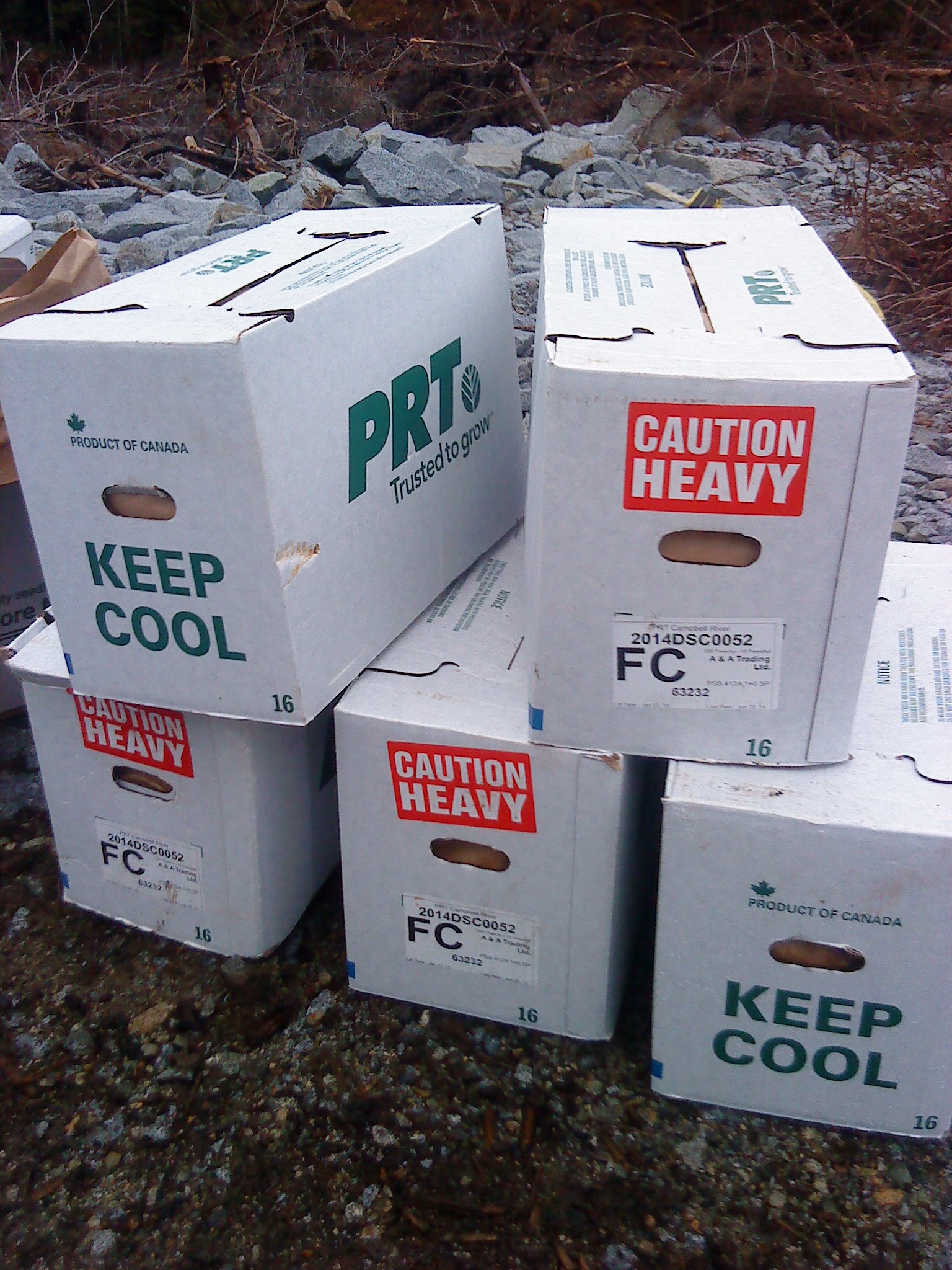Waste Reduction Strategies in Planting
Climate change is one of the biggest problems that the world has ever faced. As a tree planting company, we are proud to be part of the solution, helping to regrow forests and remove carbon from the atmosphere. Unfortunately, even in our industry, there are still significant problems around waste that must be addressed. Efforts to improve our processes are being made every year to reduce our impact, however, finding solutions that are effective and financially feasible is proving to be a challenge. Still, Leader Silviculture is committed to building a more sustainable planting industry and is working with organizations like the WFCA to improve our operations. In this article, we wanted to discuss some areas where waste is common, and some solutions being tested.
Flagging Tape
One of planting’s largest and most permanent uses of plastics is flagging tape. Although some planters and jurisdictions opt not to use it, sometimes, the terrain makes it non-optional. Because of this, flagging tape is here to stay, quite literally. In recent years, the Ministry of Forests has been discussing ways to eliminate its use because, on top of its permanence, there have now been reports of tape being found in the digestive tracts of cows and other wildlife.
To be a viable solution, the alternative must have a few components: Cost-effectiveness, ease of use, and weather resilience. So far, the industry has experimented with a few ideas:
Chalk Sprays:
Spraying trees with chalk-based paint removes the need for flagging tape at all, which helps productivity. It’s also cheap at scale because it can be done in bulk at nurseries. Unfortunately, its main drawback is that when it rains, the paint turns into a gooey, sticky mess that affects its handling. It also runs the risk of washing off prematurely with extended rain. To make things worse, we’re now hearing health concerns for those handling it in nurseries over extended periods. For those reasons, chalk paint likely isn’t a viable option right now, at least large-scale.
Biodegradable Tape:
Biodegradable, starch-based flagging tape is the most obvious solution to plastic tape. It’s a great idea, however, the main barrier is price, with biodegradable tape costing anywhere from 4-10x more than plastic, which adds up. Another factor is the timeline for biodegradation. While the corn-starch-based tape should degrade over time, we are yet to see how long it takes. Thinner tapes should degrade faster, but could become too brittle to use. More testing needs to be done, however, we are hopeful that this could be a solution in the long term.
Plastic Wrapped Tree Bundles
Every planting box has anywhere from 15 to 25 bundles of trees, each wrapped in about two feet of wrap, creating significant waste at scale. The plastic keeps the trees compact, provides a fool-proof way to count trees while bagging up, and protects the tree plugs from damage during transportation. For a solution to be viable, it would need to be able to do these three things in a cost-effective way. So far, these ideas have been tried:
Unwrapped Bundles:
Keeping loose trees in a box provides more problems than solutions. It’s tedious to count and provides zero protection to trees, making it less than ideal in most applications.
Wine-box:
One idea was using boxes with internal dividers, similar to a wine box. This allows for pretty easy counting for the planters, however, it still offers no protection to the plugs. Plus, the added material and packaging time will increase costs significantly.
Box with Horizontal Dividers:
Somewhere in between loose trees and wine boxes, is using sheets of cardboard to separate layers of trees. Unfortunately, this solution still provides no protection to the plugs. Plus, during transport, the boxes can get shaken up, resulting in the trees slipping under dividers and negating any benefit. Thicker, sturdier dividers can prevent this, but at some point, we’re back at the cost issue of the wine-box.
Wax-Lined Tree Boxes
Tree boxes are lined with a layer of wax to provide protection against rain, which makes them unrecyclable. Unfortunately, this means that an estimated three million tree boxes are brought the landfill every year in Canada. The best solution at this point is for waste boxes to be used as fuel in cogeneration facilities at local mills, so the boxes can find another use as power, rather than piling up in a landfill. The only issue is that not every cogen facility have permits that allow them to burn the boxes, as the stricter emissions standards do not allow for such products to be used, mainly near urban centers. So far, trials have conducted whereas the boxes are chipped, then mixed with the allowable fuels. The results are encouraging but still need to get approval at the bureaucratic level to obtain a variance for the permit. The WFCA is working towards a solution to convince authorities to allow for a variance in these permits, and ultimately, the goal is to prevent more than a million boxes annually to overload our community landfills.


